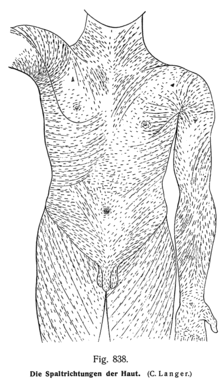 |
| J. Ex Bio. Death Roll of the Alligator: Mechanics of Twist Feeding Spinning maneuver of juvenile alligator after initiation (0 ms). The alligator has bitten onto a piece of meat. During the spinning maneuver, the rotational axes of the head, body and tail maintain a fixed relative orientation to the frame of reference of the aquarium. Note that the relative orientation of the body parts do change with respect to each other. For instance, the tail starts bent to the left side of the alligator at 20 ms, but is bent to the right side of the animal by 120 ms, although still on the left side of the image. The limbs are appressed against the body and the head and tail are canted at angles to the body axis. The head, body and tail all spin in the same rotational direction with the same angular speed. |
And some slow-mo death roll....
Why the death roll is so devastating is that it creates significant torsional forces, and animal tissue does not respond well to torsional stress. This is due to the anatomical orientation of Langer's lines or lines of cleavage which are the natural orientation of collagen fibers that roughly
parallel muscle orientation. Surgeons, whenever possible, attempt to make incisions parallel with these lines to avoid scarring/keloids.
While crocodilians are most notorious and well known for the death roll, what is not well known is how common a manoeuvre the death roll actually is throughout the animal kingdom.
Many fish do the death roll. At about the 2:30 mark in this video you can see two Polypterus bichirs do a little death roll. And here are some nice death rolls by some more bichirs with some hilarious commentary to boot- makes me miss my ornate bichir. Also check out Bichir's midnight snack crazyfest for more nice bichir death roll action. Amphibians get in on the fun to with many salamanders, amphiumas, caecilians, and mudpuppies often reportedly using the tactic to dismantle prey too large to swallow. Lizards will occasionally death roll, especially monitor lizards, and even for small lizards the death roll may be a more common activity than realized when dealing with prey that can not be swallowed as the video below suggests.
parallel muscle orientation. Surgeons, whenever possible, attempt to make incisions parallel with these lines to avoid scarring/keloids.
While crocodilians are most notorious and well known for the death roll, what is not well known is how common a manoeuvre the death roll actually is throughout the animal kingdom.
Many fish do the death roll. At about the 2:30 mark in this video you can see two Polypterus bichirs do a little death roll. And here are some nice death rolls by some more bichirs with some hilarious commentary to boot- makes me miss my ornate bichir. Also check out Bichir's midnight snack crazyfest for more nice bichir death roll action. Amphibians get in on the fun to with many salamanders, amphiumas, caecilians, and mudpuppies often reportedly using the tactic to dismantle prey too large to swallow. Lizards will occasionally death roll, especially monitor lizards, and even for small lizards the death roll may be a more common activity than realized when dealing with prey that can not be swallowed as the video below suggests.
But probably the group of animals most known for death rolling after crocodilians are the Anguilliformes- the eels. In eels you see the attributes that more or less unite all death rollers; a long, low body; legs or fins that are small or can be tucked against the body; pincerlike teeth with a strong bite: minimal or non-existent dorsal fin.
Remember when Jeremy Wade covered himself with fish guts and was subsequently nibbled by New Zealand Longfin "flesh ripper" eels? One does a little death roll on his kevlar gloved hand. But check out this video of some longfins death rolling a deer carcass.. kinda grim.
Moray eels will also death roll, especially when tackling octopi, but even in water too cold for moray eels you have massive Conger eels.
An unprovoked attack on an Irish scuba diver, Mr. Jimmy Griffin, by a Conger eel took place in 2013. The attack occurred 25 meters down and the impact knocked his regulator off. According to Griffin the hit felt like a punch to the face and it then rag-dolled him before spinning off a chunk of his face, presumably in a death roll.
Well as you can see, death-rolls, no matter what critter is performing them are no joke!!! So roll with them LOL!!!
Pertinencia
Remember when Jeremy Wade covered himself with fish guts and was subsequently nibbled by New Zealand Longfin "flesh ripper" eels? One does a little death roll on his kevlar gloved hand. But check out this video of some longfins death rolling a deer carcass.. kinda grim.
Moray eels will also death roll, especially when tackling octopi, but even in water too cold for moray eels you have massive Conger eels.
An unprovoked attack on an Irish scuba diver, Mr. Jimmy Griffin, by a Conger eel took place in 2013. The attack occurred 25 meters down and the impact knocked his regulator off. According to Griffin the hit felt like a punch to the face and it then rag-dolled him before spinning off a chunk of his face, presumably in a death roll.
Well as you can see, death-rolls, no matter what critter is performing them are no joke!!! So roll with them LOL!!!
Pertinencia
Fish
FE, Bostic SA, Nicastro AJ, Beneski JT (2007) Death roll of the
alligator: mechanics of twist feeding in water. Journal of
experimental biology 210: 2811–2818.
Helfman,
G. S. and Clark, J. B.
(1986). Rotational feeding: overcoming gape-limited foraging in
anguillid eels. Copeia
1986,679
-685.
Measey,
G. J. and Herrel, A. (2006). Rotational feeding in caecilians:
putting a spin on the evolution of cranial design. Biol.
Lett.
2,485
-487.
Support me on Patreon.
Like antediluvian salad on facebook.
Watch me on Deviantart @NashD1.Subscribe to my youtube channel Duane Nash.
My other blog southlandbeaver.blogspot.




